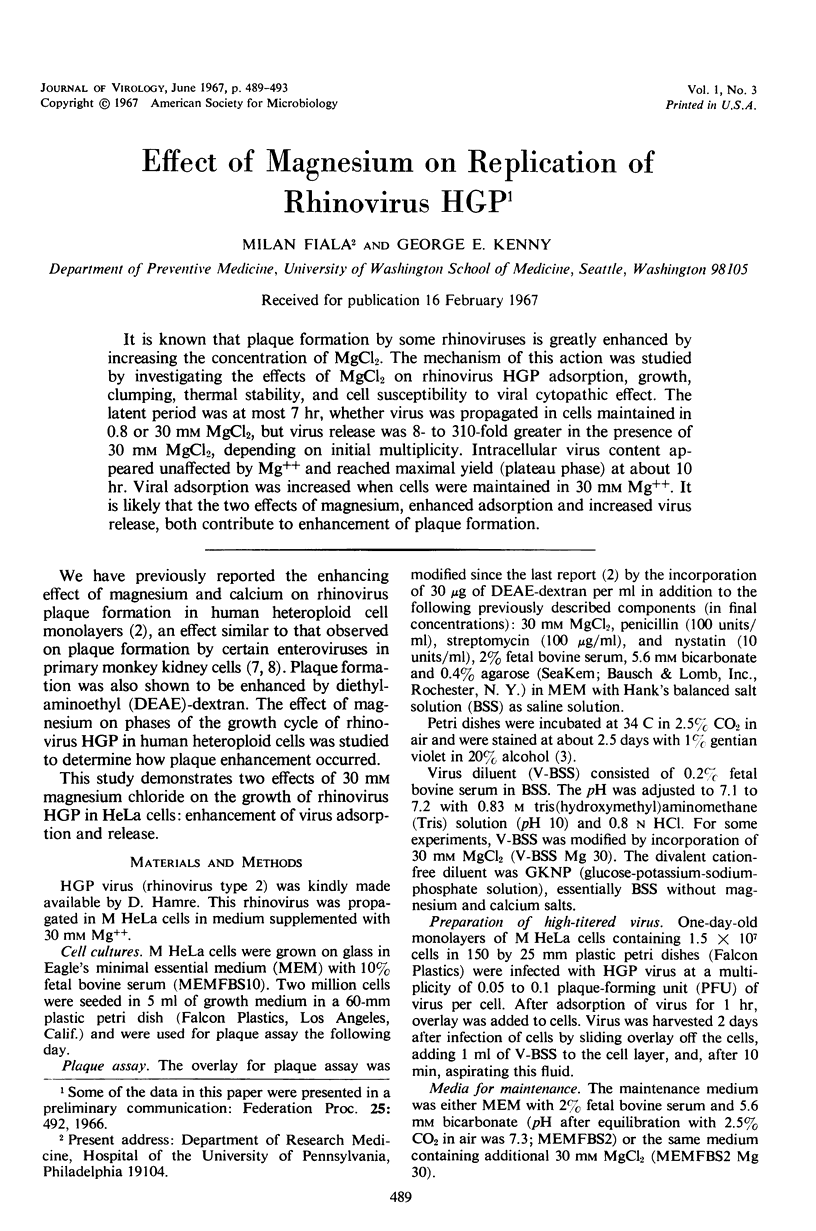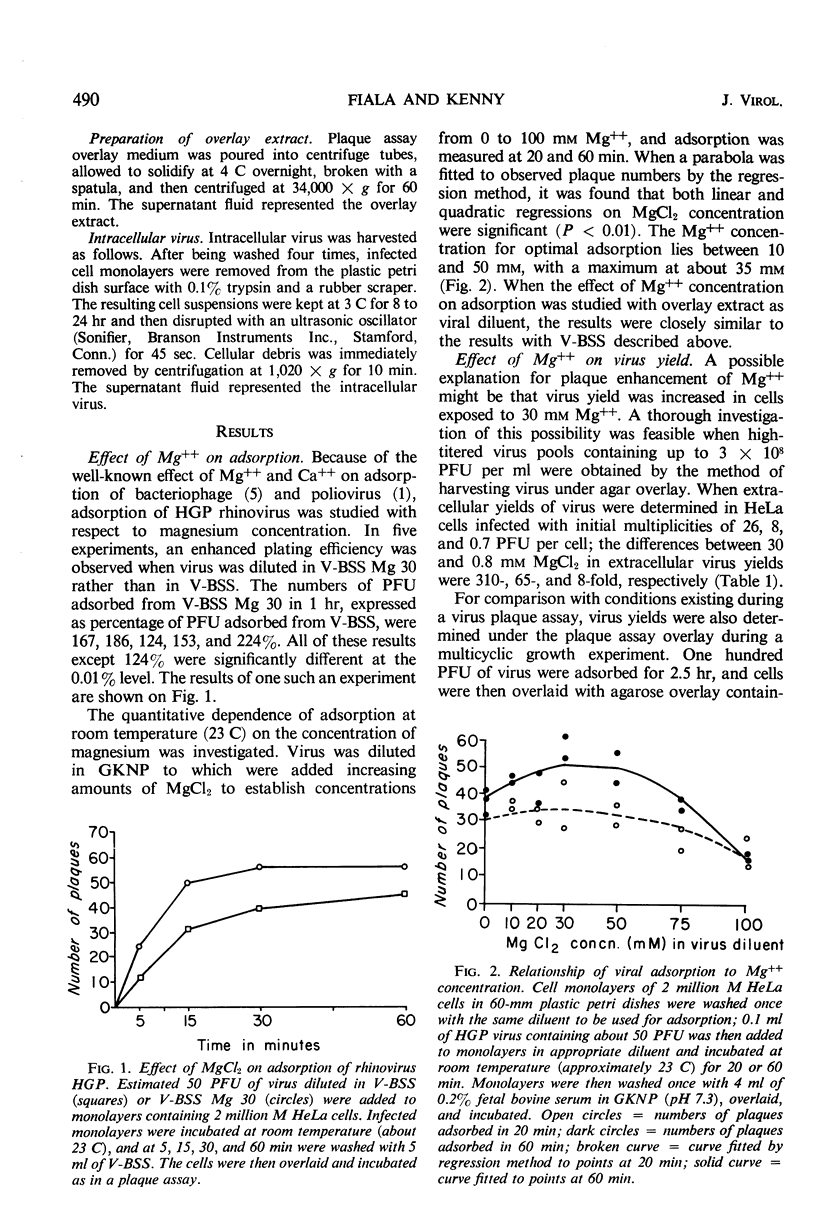Abstract
It is known that plaque formation by some rhinoviruses is greatly enhanced by increasing the concentration of MgCl2. The mechanism of this action was studied by investigating the effects of MgCl2 on rhinovirus HGP adsorption, growth, clumping, thermal stability, and cell susceptibility to viral cytopathic effect. The latent period was at most 7 hr, whether virus was propagated in cells maintained in 0.8 or 30 mm MgCl2, but virus release was 8- to 310-fold greater in the presence of 30mm MgCl2, depending on initial multiplicity. Intracellular virus content appeared unaffected by Mg++ and reached maximal yield (plateau phase) at about 10 hr. Viral adsorption was increased when cells were maintained in 30mm Mg++. It is likely that the two effects of magnesium, enhanced adsorption and increased virus release, both contribute to enhancement of plaque formation.
Full text
PDF




Selected References
These references are in PubMed. This may not be the complete list of references from this article.
- BACHTOLD J. G., BUBEL H. C., GEBHARDT L. P. The primary interaction of poliomyelitis virus with host cells of tissue culture origin. Virology. 1957 Dec;4(3):582–589. doi: 10.1016/0042-6822(57)90087-9. [DOI] [PubMed] [Google Scholar]
- Fiala M., Kenny G. E. Enhancement of rhinovirus plaque formation in human heteroploid cell cultures by magnesium and calcium. J Bacteriol. 1966 Dec;92(6):1710–1715. doi: 10.1128/jb.92.6.1710-1715.1966. [DOI] [PMC free article] [PubMed] [Google Scholar]
- HOLLAND J. J., McLAREN L. C. Improved method for staining cell monolayers for virus plaque counts. J Bacteriol. 1959 Oct;78:596–597. doi: 10.1128/jb.78.4.596-597.1959. [DOI] [PMC free article] [PubMed] [Google Scholar]
- PUCK T. T., GAREN A., CLINE J. The mechanism of virus attachment to host cells. I. The role of ions in the primary reaction. J Exp Med. 1951 Jan;93(1):65–88. doi: 10.1084/jem.93.1.65. [DOI] [PMC free article] [PubMed] [Google Scholar]
- Paranchych W. Stages in phage R17 infection: the role of divalent cations. Virology. 1966 Jan;28(1):90–99. doi: 10.1016/0042-6822(66)90309-6. [DOI] [PubMed] [Google Scholar]
- STEIN E. A., FISCHER E. H. The resistance of alpha-amylases towards proteolytic attack. J Biol Chem. 1958 Jun;232(2):867–879. [PubMed] [Google Scholar]
- WALLIS C., MELNICK J. L., BIANCHI M. Factors influencing enterovirus and reovirus growth and plaque formation. Tex Rep Biol Med. 1962;20:693–702. [PubMed] [Google Scholar]
- WALLIS C., MELNICK J. L. Magnesium chloride enhancement of cell susceptibility to poliovirus. Virology. 1962 Feb;16:122–132. doi: 10.1016/0042-6822(62)90287-8. [DOI] [PubMed] [Google Scholar]


